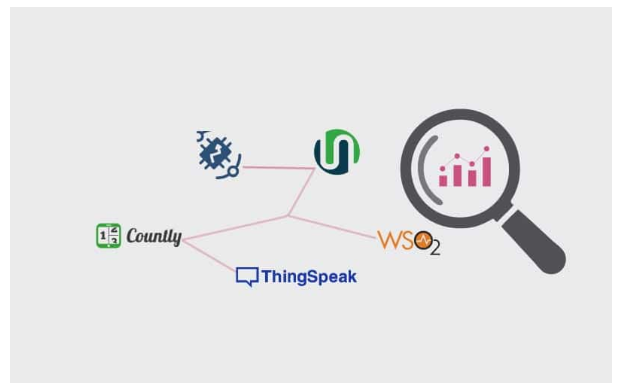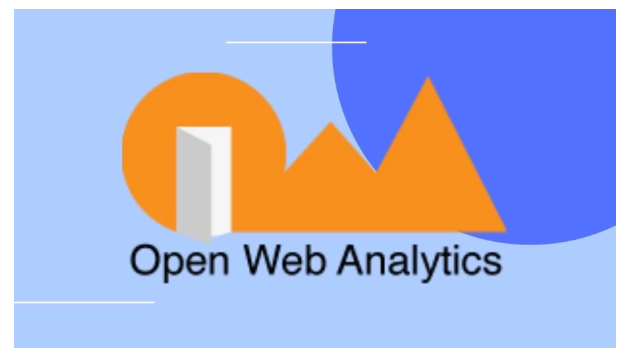Unleashing Flexibility: Open Source Alternatives to Google Analytics for Tracking
When it comes to tracking website analytics, there’s a growing demand for open-source alternatives to Google Analytics. These options provide businesses with flexibility and control over their data without compromising on valuable insights.
One such alternative is Matomo (formerly Piwik), a powerful analytics platform with a robust feature set. Matomo offers comprehensive tracking capabilities, including page views, conversions, bounce rates, and more. Notably, it allows businesses to retain data ownership, avoiding third-party sharing concerns.
Another open-source solution gaining traction is Open Web Analytics (OWA). OWA provides detailed reports on website visitors, including their geographic location, browser preferences, and referral sources. This wealth of information empowers businesses to optimize their marketing efforts and improve user experience. With customizable dashboards and real-time tracking, OWA offers a user-friendly interface that caters to diverse analytical needs.
Let’s remember Clicky, a popular open-source alternative. Clicky offers real-time analytics and heatmaps, allowing businesses to monitor website traffic as it happens. This level of immediacy helps identify trends and user behavior patterns promptly. Clicky also provides advanced features like goals and campaigns, enabling businesses to track specific conversion metrics and evaluate marketing campaign effectiveness.
By exploring these open-source alternatives, businesses can unleash the power of flexibility in tracking their website analytics. Embracing these solutions offers control over data privacy and provides insightful statistics and customizable features, enabling data-driven decision-making for enhanced online performance.
What are Open-Source Tracking Solutions
In the digital landscape, open-source tracking solutions have emerged as compelling alternatives to proprietary analytics tools. Open-source software allows businesses to access, modify, and distribute the code, fostering collaboration and customization. These solutions provide valuable insights into website performance and prioritize data privacy and ownership. Let’s delve into a few noteworthy open-source tracking solutions that are gaining popularity.
Matomo (formerly Piwik) is a robust analytics platform that empowers businesses with comprehensive tracking capabilities. With Matomo, organizations can collect data on page views, conversions, and bounce rates, among other crucial metrics. Its emphasis on data ownership sets it apart, enabling businesses to retain control over their valuable information.
Open Web Analytics (OWA) is another noteworthy open-source option. It provides detailed reports on website visitors, including their geographic location, referral sources, and browser preferences. OWA’s customizable dashboards and real-time tracking features offer a user-friendly interface that caters to diverse analytical needs.
Clicky is a popular open-source alternative that specializes in real-time analytics. With Clicky, businesses can monitor website traffic as it happens, gaining immediate insights into user behavior patterns. Additionally, Clicky offers advanced features such as goals and campaigns, allowing organizations to track specific conversion metrics and evaluate the effectiveness of marketing campaigns.
By embracing open-source tracking solutions, businesses can harness flexibility, data control, and customization. These tools offer comprehensive analytics and prioritize data privacy, empowering organizations to make informed decisions and optimize their online performance.

The Rise of Open-Source Analytics Tools
Open-source analytics tools have been experiencing a significant rise in popularity, revolutionizing the way businesses approach data analysis. These tools, developed collaboratively by a community of contributors, offer a range of benefits that contribute to their growing prominence.
One key advantage is the transparency and accessibility of open-source analytics tools. Unlike proprietary solutions, their source code is freely available, allowing users to examine and modify it according to their specific requirements. This level of transparency fosters innovation, customization, and continuous improvement, as developers worldwide contribute to the software’s evolution.
Another driving force behind the rise of open-source analytics tools is the emphasis on data privacy and security. With rising concerns about data breaches and unauthorized access, businesses seek alternatives offering greater control over their sensitive information. Open-source tools enable organizations to host data on their own servers, reducing reliance on third-party platforms and mitigating potential risks.
Cost-effectiveness is another compelling factor. Open-source analytics tools typically come with lower or no licensing costs, making them an attractive option for businesses with limited budgets. Moreover, the absence of vendor lock-in ensures that organizations can freely migrate their data and workflows between different tools without incurring additional expenses.
The versatility and extensibility of open-source analytics tools are worth mentioning as well. Many of these tools provide APIs and integrations with other software, allowing businesses to connect different data sources and streamline their analytics processes. This flexibility enables organizations to tailor the tools to their specific needs, scaling and expanding their analytics capabilities as their requirements evolve.
As open-source analytics tools evolve and gain traction, businesses increasingly recognize their potential for driving data-driven decision-making, ensuring data security, and optimizing costs. With a vibrant community supporting their development and a wealth of features at their disposal, these tools are set to play an integral role in the future of analytics.
Benefits of Open Source for Tracking Website Performance
Open-source solutions offer several compelling benefits for tracking website performance, making them attractive for businesses. Here are some key advantages:
- Transparency and Customizability: Open-source tracking tools provide transparency by making their source code accessible. This allows businesses to examine the inner workings of the software, ensuring data accuracy and eliminating concerns about hidden functionalities. Additionally, organizations can customize the tracking implementation to suit their specific needs, tailoring the solution to their unique requirements.
- Data Ownership and Privacy: Open-source tracking solutions empower businesses to maintain ownership of their data. Unlike proprietary tools, which often involve data sharing with third parties, open-source solutions allow organizations to retain full control over their valuable information. This enhanced data privacy is crucial for compliance with regulations and maintaining customer trust.
- Flexibility and Extensibility: Open-source tracking tools are typically highly flexible and extensible. They often provide APIs and integrations that enable seamless connectivity with other systems, allowing businesses to integrate data from various sources and gain a comprehensive view of website performance. This flexibility also means that organizations can adapt and scale the tracking solution as their needs evolve over time.
- Community Support and Continuous Improvement: Open-source solutions benefit from a vibrant community of developers and users contributing to their improvement. This community support ensures that the software remains up-to-date, secure, and equipped with new features and enhancements. Businesses can leverage this collective expertise to troubleshoot issues, share insights, and collaborate on further optimizing their website tracking capabilities.
- Cost-Effectiveness: Open-source tracking tools often come with lower or no licensing costs, making them a cost-effective option for businesses, especially for small or budget-conscious organizations. This cost advantage allows businesses to allocate resources to other critical areas while leveraging powerful tracking capabilities.
By embracing open-source solutions for tracking website performance, businesses can benefit from transparency, data ownership, customization options, flexibility, community support, and cost savings. These advantages combine to provide organizations with greater control over their data, improved decision-making capabilities, and enhanced overall website performance.
Open Source Tracking Solutions
Open-source tracking solutions offer businesses a range of options for monitoring and analyzing website performance. Here are a few notable open-source tracking solutions worth considering:
- Matomo (formerly Piwik): Matomo is a feature-rich analytics platform that provides businesses with comprehensive tracking capabilities. It offers insights into various metrics, including page views, conversions, bounce rates, and more. Matomo prioritizes data ownership and privacy, allowing organizations to retain control over their data and avoid third-party sharing concerns.
- Open Web Analytics (OWA): OWA is a powerful open-source analytics tool offering detailed website visitor reports. It provides information on visitor demographics, referral sources, geographic locations, and browser preferences. With customizable dashboards and real-time tracking, OWA offers a user-friendly interface for analyzing website performance.
- Clicky: Clicky is a popular open-source alternative known for its real-time analytics capabilities. It allows businesses to monitor website traffic as it happens, providing immediate insights into user behavior patterns. Clicky also offers advanced features such as goal tracking and campaign analysis, enabling organizations to measure specific conversion metrics and assess the effectiveness of marketing campaigns.
- MatH: MatH (Matomo Analytics for Healthcare) is a specialized open-source analytics solution designed specifically for the healthcare industry. It helps healthcare organizations track and analyze website performance, patient engagement, and marketing campaigns while complying with strict data privacy regulations.
- Fathom Analytics: Fathom Analytics is a privacy-focused open-source analytics platform. It provides essential website analytics without compromising user privacy. Fathom aims to deliver accurate insights while minimizing data collection and ensuring compliance with privacy regulations.
These open-source tracking solutions offer businesses the flexibility, customization, and data privacy they seek. By leveraging these tools, organizations can gain valuable insights into their website performance, optimize marketing efforts, and make data-driven decisions while maintaining control over their data and respecting user privacy.
Solution 1: Matomo (formerly Piwik)
Matomo (formerly Piwik) is a powerful open-source tracking solution that offers businesses comprehensive analytics capabilities. With Matomo, organizations can gain valuable insights into their website performance while retaining control over their data.
One of the standout features of Matomo is its extensive tracking capabilities. It provides detailed information on various metrics, including page views, conversions, bounce rates, and more. This wealth of data allows businesses to understand how visitors interact with their websites and make informed decisions to improve user experience and drive conversions.
Data ownership and privacy are paramount with Matomo. Unlike proprietary analytics tools, Matomo allows organizations to host their data on their own servers, ensuring complete control and eliminating concerns about data being shared with third parties. This level of data ownership is particularly crucial for businesses that handle sensitive information or operate in highly regulated industries.
Matomo also offers a range of customization options. Businesses can tailor the tracking implementation to suit their specific needs, such as defining custom dimensions and goals. The platform’s flexible reporting features enable organizations to create custom reports and dashboards, presenting data in a way that aligns with their unique requirements.
Moreover, Matomo provides user-friendly interfaces and intuitive visualizations that make it easy for businesses to analyze and interpret their data. The platform offers real-time tracking, allowing businesses to monitor website activity as it happens and respond promptly to emerging trends or issues.
With its robust features, emphasis on data ownership and privacy, and customization options, Matomo is a compelling open-source tracking solution for businesses seeking comprehensive website analytics while maintaining control over their data.

Solution 2: Open Web Analytics
Open Web Analytics (OWA) is a powerful open-source tracking solution that empowers businesses to gain deep insights into their website visitors and analyze website performance effectively.
One of the key strengths of OWA is its detailed reporting capabilities. It provides businesses with comprehensive information about their website visitors, including demographics, referral sources, geographic locations, and browser preferences. This level of detail allows organizations to understand their audience better and tailor their strategies accordingly.
OWA offers customizable dashboards, enabling businesses to create personalized views of their data. This flexibility allows organizations to focus on specific metrics and monitor the key performance indicators (KPIs) that are most relevant to their goals. Additionally, the real-time tracking feature of OWA ensures that businesses can monitor website activity as it happens, enabling timely responses to visitor behavior.
The user-friendly interface of OWA makes it easy for businesses to navigate and analyze their data. The platform provides intuitive visualizations and easy-to-understand reports, allowing users to extract meaningful insights without the need for extensive technical expertise.
OWA is highly extensible, with a range of APIs and integrations available. This allows businesses to connect OWA with other systems and data sources, creating a more holistic view of their online performance. Integration with content management systems (CMS) and e-commerce platforms further enhances tracking capabilities and enables deeper analysis of customer interactions.
Furthermore, OWA is an open-source solution, meaning that businesses have complete control over their data. They can host the tracking system on their own servers, ensuring data privacy and compliance with data protection regulations.
Open Web Analytics offers businesses a comprehensive, customizable, and privacy-conscious solution for tracking and analyzing website performance. Its detailed reporting, customization options, user-friendly interface, and extensibility make it a valuable tool for businesses aiming to optimize their online presence.
Solution 3: Fathom Analytics
Fathom Analytics is a privacy-focused open-source tracking solution that provides businesses with essential website analytics while prioritizing user privacy.
One of the key advantages of Fathom Analytics is its commitment to data privacy. It offers a privacy-focused approach to analytics, minimizing data collection and avoiding the use of cookies or tracking scripts that could compromise user privacy. This makes it an ideal choice for businesses prioritizing ethical data handling and compliance with privacy regulations.
Fathom Analytics provides businesses with essential analytics data without overwhelming them with unnecessary details. It offers insights into crucial metrics such as page views, referrers, bounce rates, and popular content. This streamlined approach allows organizations to focus on actionable data points and make informed decisions to improve website performance.
The simplicity and ease of use are prominent features of Fathom Analytics. The platform offers a clean and intuitive interface, making it easy for businesses to navigate and understand their analytics data. The reports and visualizations are presented clearly and concisely, enabling users to quickly grasp the key insights without getting lost in complex analytics dashboards.
As an open-source solution, Fathom Analytics allows businesses to host the tracking system on their own servers. This ensures full control and ownership of data, reducing reliance on third-party platforms and mitigating the risks associated with data sharing.
Additionally, Fathom Analytics offers integrations with popular content management systems (CMS) and e-commerce platforms, facilitating seamless integration into existing workflows and enhancing tracking capabilities.
Fathom Analytics offers a privacy-focused, simplified, and user-friendly open-source tracking solution. It prioritizes data privacy, provides essential analytics data, and offers self-hosting flexibility. Businesses looking for a streamlined and privacy-conscious approach to website analytics can benefit from Fathom Analytics.
Advantages and Considerations of Open Source Tracking
Advantages of Open Source Tracking:
- Transparency: Open-source tracking solutions provide transparency by making their source code accessible. This allows businesses to examine and verify the functionality and security of the tracking software, ensuring data accuracy and reducing concerns about hidden or malicious code.
- Customizability: Open-source tracking solutions offer the flexibility to customize the software according to specific business needs. Organizations can modify and extend the tracking functionality, integrate with other systems, and adapt the solution to align with their unique requirements and workflows.
- Data Ownership and Privacy: Open-source tracking solutions allow businesses to retain ownership and control over their data. With self-hosting options, organizations can store and manage their data on their own servers, reducing reliance on third-party platforms and minimizing potential risks associated with data sharing.
- Community Support and Collaboration: Open-source projects often benefit from a vibrant community of developers and users who contribute to the software’s development and improvement. This community support provides access to a wealth of expertise, troubleshooting assistance, and the opportunity to collaborate with others to enhance the tracking solution.
Considerations of Open Source Tracking:
- Technical Expertise: Implementing and managing open-source tracking solutions may require technical expertise or dedicated resources within the organization. Ensuring that the necessary skills and knowledge are available to effectively set up, configure, and maintain the tracking system is essential.
- Support and Documentation: While open-source communities provide support, documentation, and forums for assistance, the level and quality of available support may vary. Evaluating the availability of resources and community engagement is important to ensure that the necessary help and guidance are accessible when needed.
- Continuous Maintenance: Open-source tracking solutions require ongoing maintenance to keep the software up to date, ensure security patches, and incorporate new features or improvements. Organizations must allocate resources to monitor updates, perform regular maintenance tasks, and stay informed about the latest developments in the open-source project.
- Integration Challenges: Integrating open-source tracking solutions with existing systems and platforms may require additional effort and development work. Compatibility issues or limitations in existing integrations could arise, requiring custom development or third-party extensions to achieve seamless integration.
- Scalability and Enterprise Support: Open-source solutions may have limitations in scalability and may need more enterprise-level features or dedicated customer support compared to proprietary alternatives. Organizations considering open-source tracking solutions should evaluate their scalability requirements and assess the level of support available for their specific needs.
By carefully considering these advantages and considerations, businesses can make informed decisions when choosing open-source tracking solutions that align with their goals, technical capabilities, and data privacy requirements.
How to Choose the Right Open-Source Tracking Solution?
Choosing the right open-source tracking solution requires careful consideration of several factors. Here are some steps to help you in the selection process:
- Define Your Requirements: Start by identifying your specific tracking and analytics needs. Consider the metrics and data points you want to track, the level of customization required, integration capabilities with your existing systems, and any specific compliance or privacy requirements.
- Research Available Solutions: Conduct thorough research to identify open-source tracking solutions that align with your requirements. Explore their features, functionalities, and documentation to understand their capabilities and limitations. Consider factors such as community support, active development, and the solution’s reputation within the open-source community.
- Evaluate Ease of Use: Consider the user interface and usability of the tracking solution. Look for a solution that offers an intuitive and user-friendly interface, making it easy for your team to navigate, set up, and interpret the analytics data.
- Assess Customization Options: Determine the level of customization the tracking solution offers. Consider whether it allows you to define custom dimensions, goals, and reports. Assess if it supports integration with other systems and if it provides APIs or extensions to extend the functionality according to your specific needs.
- Review Data Ownership and Privacy: Consider the solution’s approach to data ownership and privacy. Ensure that the open-source tracking solution allows you to retain ownership and control over your data and that it aligns with your organization’s privacy policies and compliance requirements.
- Consider Technical Expertise and Support: Assess the technical skills and resources available within your organization to implement and maintain the open-source tracking solution. Evaluate the availability of community support, documentation, and forums for assistance. Consider the level of active development and the responsiveness of the community in addressing issues or providing guidance.
- Test and Trial: Try out the shortlisted tracking solutions through trials or demos whenever possible. This lets you experience the user interface, functionality, and usability firsthand. Testing the solutions with real data can also help you evaluate their performance and suitability for your tracking needs.
- Consider Long-term Viability: Assess the long-term viability of the open-source tracking solution. Consider factors such as the size and activity of the community, the frequency of updates and new releases, and the overall roadmap and vision of the project. This ensures that the solution will continue to evolve and meet your future tracking requirements.
By following these steps and conducting a thorough evaluation, you can choose the right open-source tracking solution that meets your specific tracking needs, provides data privacy, and aligns with your organization’s technical capabilities and long-term goals.
Tips for Successful Implementation of Open Source Tracking
Implementing open-source tracking successfully requires careful planning and execution. Here are some tips to ensure a smooth and effective implementation:
- Define Clear Objectives: Clearly outline your tracking objectives and what you aim to achieve with the open-source tracking solution. Identify the key metrics and data points you want to track and analyze. Having well-defined objectives will help guide your implementation process.
- Select the Right Solution: Choose the open-source tracking solution that best aligns with your objectives, requirements, and technical capabilities. Consider features, customization options, community support, and data privacy. Ensure the solution fits your needs and integrates seamlessly with your existing systems.
- Plan for Data Collection: Determine what data you need to collect and how it will be collected. Define your website or app’s tracking codes or tags to capture the desired data. Consider the structure and organization of your data to ensure it is collected in a meaningful and manageable way.
- Set Up Proper Configuration: Take the time to properly configure the open-source tracking solution according to your objectives and requirements. This includes defining goals, custom dimensions, funnels, or any other specific tracking parameters that align with your business needs. Ensure the configuration is accurate and reflects your desired tracking setup.
- Test and Validate: Before deploying the tracking solution to your live website or app, thoroughly test and validate its implementation. Verify that data is being collected accurately, tracking codes are functioning correctly, and data is organized and presented as expected. Testing helps identify any issues or discrepancies early on, allowing for timely adjustments.
- Train and Educate Your Team: Provide training and education to the relevant team members working with the tracking solution. Familiarize them with the interface, reporting capabilities, and data interpretation. Ensure they understand how to extract meaningful insights from the collected data and use it to drive informed decision-making.
- Monitor and Analyze Data: Once the tracking solution is implemented, regularly monitor and analyze the data it generates. Monitor key performance indicators (KPIs) and trends to identify improvement areas or optimization opportunities. Regularly review and update your tracking setup based on the insights gained from the data analysis.
- Stay Updated and Engage with the Community: Stay informed about updates, bug fixes, and new features released by the open-source tracking solution. Engage with the community through forums, discussion groups, or events to stay connected, share knowledge, and benefit from collective expertise.
- Maintain Security and Privacy: Ensure appropriate security measures are in place to protect the collected data. Regularly update the tracking solution to the latest version to address any security vulnerabilities. Adhere to data privacy regulations and implement necessary safeguards to protect user information.
Following these tips can increase the chances of successfully implementing open-source tracking. It allows you to collect accurate and meaningful data, gain actionable insights, and make data-driven decisions to improve your website or app performance.


